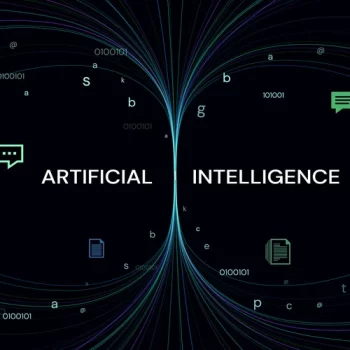Seamless management of modern IT infrastructure assets is easier said than done. With the unpredictable demands of users, organizations face several challenges in achieving modern IT Infrastructure Asset Management (ITIM).
It is where Managed Service Providers (MSPs) come in, driving success by addressing the most pressing challenges. Their expertise empowers organizations to maintain a healthy IT environment, streamline their ITIM processes, enhance user experiences, and more.
In this blog, you’ll find out about how MSPs overcome these challenges and get insights into the top capabilities that they need to bring to the table.
Related blog: Transforming Branch IT Infrastructure Management: Leveraging ITSM for Enhanced Localized Support
How MSPs Overcome Challenges of Modern IT Infrastructure Asset Management
Unreliable monitoring data due to a fragmented IT ecosystem
Organizations often operate with a fragmented IT ecosystem comprising a multitude of devices, systems, and applications. This fragmentation results in unreliable monitoring data, making it challenging to gain a comprehensive view of the entire infrastructure.
MSPs, with their expertise, can integrate diverse systems and devices, providing a unified and reliable monitoring solution. So, it ensures that IT administrators have access to accurate and up-to-date information about their infrastructure’s health and performance.
Getting reactive data analytics about IT infrastructure
Many organizations find themselves in a reactive mode when it comes to data analytics about their IT infrastructure. They often discover issues only after they impact users or disrupt operations. MSPs leverage proactive monitoring and analytics tools to predict potential problems before they occur.
This shift from reactive to proactive analytics allows organizations to address issues proactively, minimizing downtime and ensuring a smoother user experience.
Feeling the pressure of working with multiple vendors
Dealing with multiple vendors for various IT services and hardware can be overwhelming for IT administrators. Managing vendor relationships and coordinating support issues can be a time-consuming task. MSPs streamline this process by acting as a single point of contact for multiple vendors.
They handle vendor relationships, troubleshoot issues, and ensure that all components of the IT ecosystem work seamlessly together, reducing the burden on IT admins.
Struggling to integrate data-driven ITSM capabilities
Integrating data-driven IT Service Management (ITSM) capabilities into the existing IT infrastructure can be a daunting challenge. MSPs specialize in designing and implementing ITSM solutions that leverage data analytics to optimize service delivery.
This integration ensures that IT services are aligned with business objectives and improve the overall user experience.
Being unable to cope with asset complexities
Modern IT environments involve a wide array of assets, including hardware, software, licenses, and digital resources. Managing these complexities can be overwhelming for organizations. MSPs excel in asset management, employing advanced tools and methodologies to track and optimize assets.
They ensure that assets are utilized, reducing unnecessary expenditures and ensuring compliance with licensing agreements.
Complaining about poor user experiences
One of the most critical challenges faced by organizations is user dissatisfaction due to poor experiences with IT services. MSPs prioritize user experience by continuously monitoring and optimizing the modern IT infrastructure.
They proactively identify and address bottlenecks, outages, or performance issues that can negatively impact users. This results in improved user satisfaction and productivity.
Key MSP capabilities for seamless ITIM
Single enterprise-grade ITIM platform
- Full cloud monitoring: MSPs leverage advanced cloud monitoring tools to oversee a wide array of IT components, including devices, networks, servers, applications, CCTVs, Wi-Fi, cloud systems, and SDWAN. This makes sure that no part of the IT ecosystem goes unmonitored.
- Unburdening IT teams: By assuming responsibility for monitoring and maintenance, MSPs liberate IT administrators and support teams from the daily struggle of keeping infrastructure uptime at optimal levels. Hence, it allows IT teams to focus on strategic initiatives rather than firefighting.
- Simplified workflows and experiences: The adoption of an enterprise-grade ITIM platform reduces workflow complexities, resulting in a more streamlined environment. The ultimate beneficiaries are end-users who experience improved service health and a more seamless IT experience.
Integrated incident and fault management
- Real-time issue resolution: MSPs incorporate inbuilt incident and fault management systems into their ITIM arsenal. These systems continuously detect and resolve issues in real-time, preventing them from escalating into major disruptions.
- Smooth team synchronization: Workflows are designed to synchronize multiple teams seamlessly, ensuring that the right corrective measures are taken promptly. This collaborative approach minimizes downtime, outages, and other costly IT disruptions, enhancing overall operational efficiency.
Deep modern IT infrastructure insights
- Actionable intelligence: MSPs gather data from various sources, including applications (such as email and web) and servers, to gain a comprehensive understanding of every IT component. This actionable intelligence allows for informed decision-making regarding maintenance, upgrades, or replacements.
- Golden database of insights: The creation of a “golden database” of modern IT infrastructure insights provides organizations with a holistic view of their IT assets. This database becomes an invaluable resource for understanding spending, maintenance requirements, upkeep costs, and anticipating potential replacement or end-of-life expenses.
Configuration and compliance management
MSPs implement rigorous configuration management processes to ensure that all IT assets are correctly configured and compliant with industry standards and best practices.
Rapid ”scan/search” for inventory discovery
MSPs employ rapid scan and search techniques to discover and catalog inventory endpoints swiftly. This ensures that no device or component is overlooked in the monitoring and management process.
Data visualization for a 360-degree view
MSPs provide data visualization tools that offer a 360-degree view of IT operations. These visualizations empower organizations to gain insights and make informed decisions about their modern IT infrastructure.
Related blog: Can your IT Infrastructure be the cause of the low efficiency of your IT Operations?
Alerts and notifications for uptime optimization
MSPs utilize alert and notification systems to keep organizations informed about critical events and potential issues. It helps increase infrastructure uptime and minimize disruptions.
Visit www.infraon.io to better understand the role of ITIM and MSPs.



















